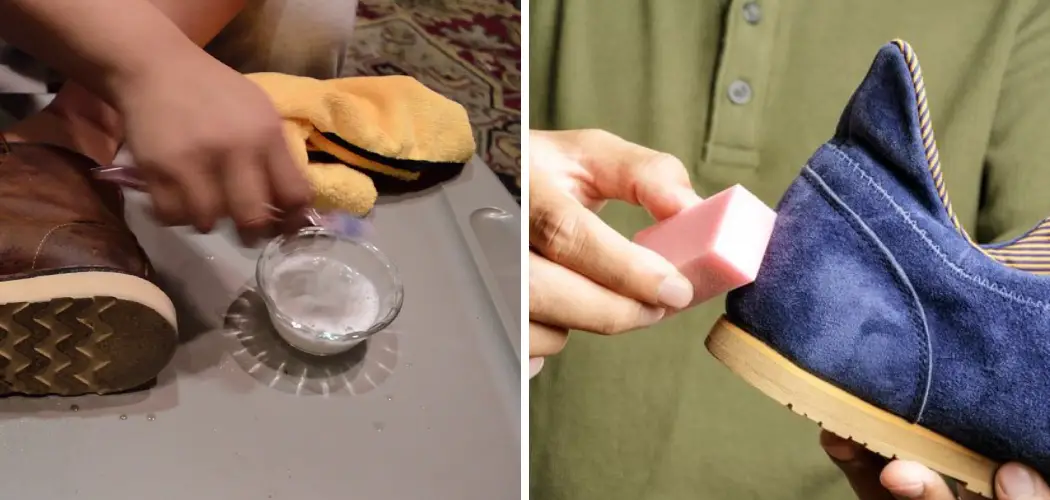If you’re anything like me, you probably love wearing sneakers but hate when they get dirty. In this article, I will teach you how to clean a crepe sole so that your sneakers always look their best. Even if you don’t own a pair of crepe-soled shoes, these tips can be applied to any sneaker. So whether you’re just getting started on your sneaker-cleaning journey or looking for new and improved ways to clean your kicks, read on!
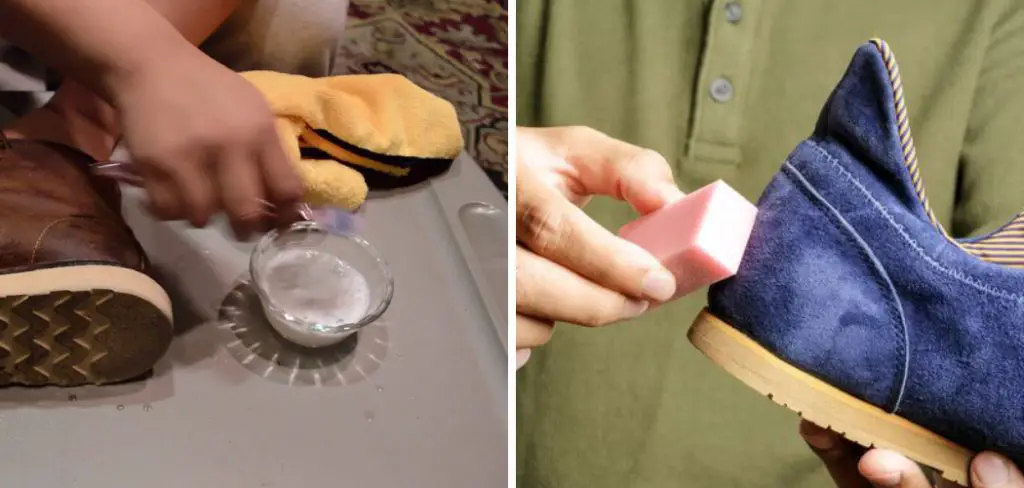
Many people mistake harsh or abrasive cleaning products for cleaning their crepe soles. However, this can damage and wear down your shoes over time. To avoid causing damage to your sneakers, it’s best to stick with gentle, non-abrasive cleaners and brushes that won’t harm the material. It’s also essential to avoid getting the leather or suede upper wet, which can cause irreversible damage. Now that you know what not to do, let’s move on to the cleaning process!
What Is a Crepe Sole?
A crepe sole is a type of footwear that features a flexible, cloth-like sole made from a material known as crepe rubber. This material has several advantages, including being lightweight, comfortable, and durable. While crepe soles were once commonly used in dress shoes and other formal footwear, they are now just as likely to be found in sneakers and other casual styles. In addition to providing an attractive appearance, crepe soles also help to absorb shock and reduce noise levels. As a result, they are ideal for those who want to enjoy both comfort and style.
What Is Crepe Sole Material?
Crepe sole material is a type of rubber commonly used in the construction of shoes and other footwear. The material is characterized by its flexibility and resilience, which makes it ideal for soles that need to be able to flex and grip the ground. In addition, sole crepe material is also very durable, meaning that it can withstand a lot of wear and tear. For these reasons, crepe sole material is often used to construct dress shoes, work boots, and other types of footwear that see a lot of use.
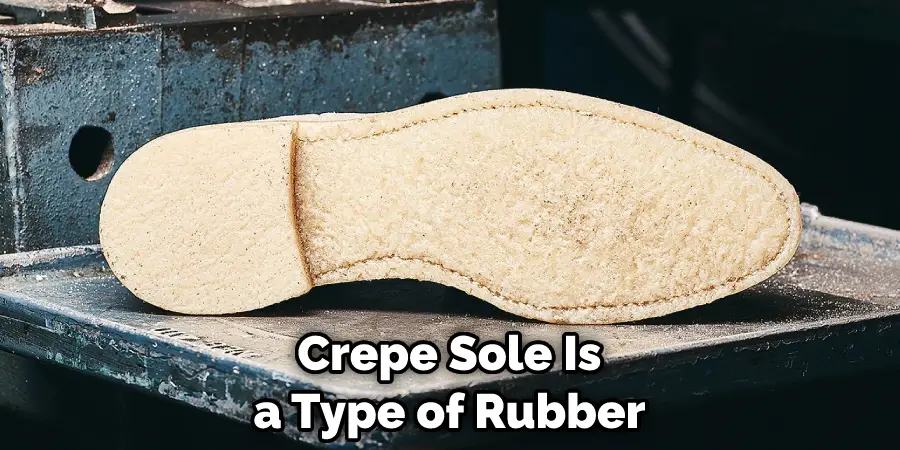
What are the Advantages of Crepe Sole Shoes?
Thanks to their elegant and sophisticated look, crepe soles are popular among fashion-conscious individuals. In addition, these shoes offer several advantages, including comfort, durability, and versatility.
Crepe soles are made from a durable rubber material that is flexible and cushioned, making them ideal for wearing all day long. In addition, these shoes are highly durable, so you can easily wear them for many years without worrying about them falling apart.
Finally, crepe sole shoes can be worn with virtually any outfit or style, making them versatile and easy to incorporate into your wardrobe. So whether you’re looking for a new pair of dress shoes or something casual for running errands around town, a pair of crepe soles will fit the bill.
Needed Materials:
Mild Soap or Sneaker Cleaner (Avoid Harsh Chemicals or Abrasive Cleaners):
To clean your crepe sole shoes, you will need a mild soap or sneaker cleaner. Avoid using harsh chemicals or abrasive cleaners as they can damage the material of your shoes.
Soft-Bristled Brush:
A soft-bristled brush is essential for cleaning the crepe sole without causing any damage. You can use an old toothbrush or purchase a specialized sneakerbrush.
Clean Cloth:
You will need a clean cloth to gently scrub and wipe away dirt and stains on your shoes.
Water:
You may also need water to help with the cleaning process, but be careful not to use too much as it can damage the leather or suede upper of your shoes.
A Detailed Guide on How to Clean a Crepe Sole
Method 1: Using a Grease-removing Detergent
A grease-removing detergent is a type of cleaning agent specifically designed to remove oil and grease stains. These detergents are usually in liquid or gel form, and they often contain enzymes that help break down the oils and fats.
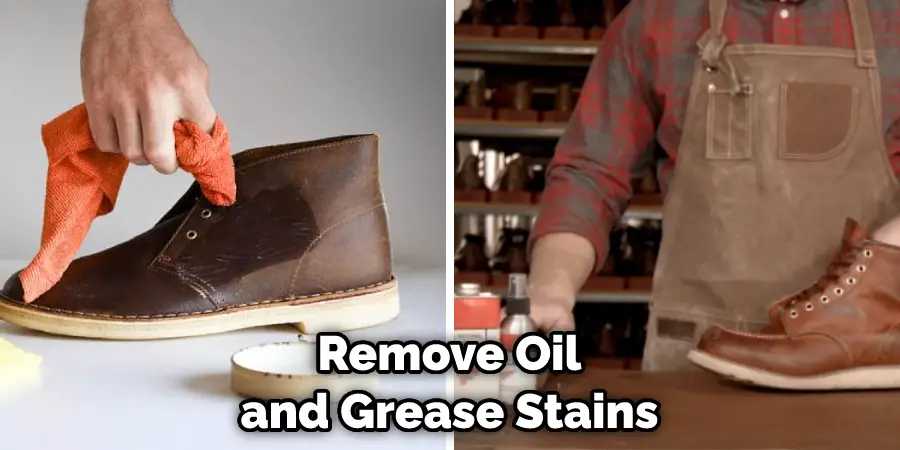
When cleaning a crepe sole with grease-removing detergent, it is essential to use a solution that will effectively break down and remove any grease or dirt from the surface.
While this method may take a little time, it is often one of the most effective ways to clean your crepe soles and make them look as good as new ones. Additionally, you may want to consider applying a protective coating over your soles after being cleaned to help them look pristine for longer.
Step 1: Choosing the Right Grease-removing Detergent
When choosing a grease-removing detergent, you will want to select one explicitly designed for removing oil and grease stains. Many general-purpose cleaners may be effective at removing grease, but they often do not contain the right ingredients to break down and remove the oils.
It is essential to read the labels of any cleaning products before using them on your crepe soles. This will ensure that you are using a safe product for your shoes and will get the job done.
Step 2: Applying the Grease-removing Detergent
Once you have chosen an appropriate grease-removing detergent, you will need to apply it to the affected area of your crepe soles. In most cases, it is best to apply the detergent directly to a clean cloth or sponge and then use this to scrub the grease or dirt.
If the stain is particularly stubborn, you may need to let the detergent sit on the surface for a minute or two before scrubbing. This will give the enzymes in the detergent time to break down the oils and make them easier to remove.
Step 3: Rinse Off the Detergent
After you have scrubbed at the stain with your chosen grease-removing detergent, it is essential to rinse off any residual cleaner. Simply wipe down the surface with a damp cloth or sponge, and then remove any excess water with a dry towel. This will help prevent any damage to the material and ensure that your crepe soles look great.
It is important to note that you should never soak your crepe soles in water. This can cause the material to break down and lose its shape, resulting in a less durable sole. You should only use a small amount of water to rinse off the cleaner.
Step 4: Apply a Protective Coating (Optional)
Once your crepe soles are clean and free of any grease or dirt, you may want to consider applying a protective coating. This will help keep your shoes looking new for longer, and it can also make them easier to clean in the future.
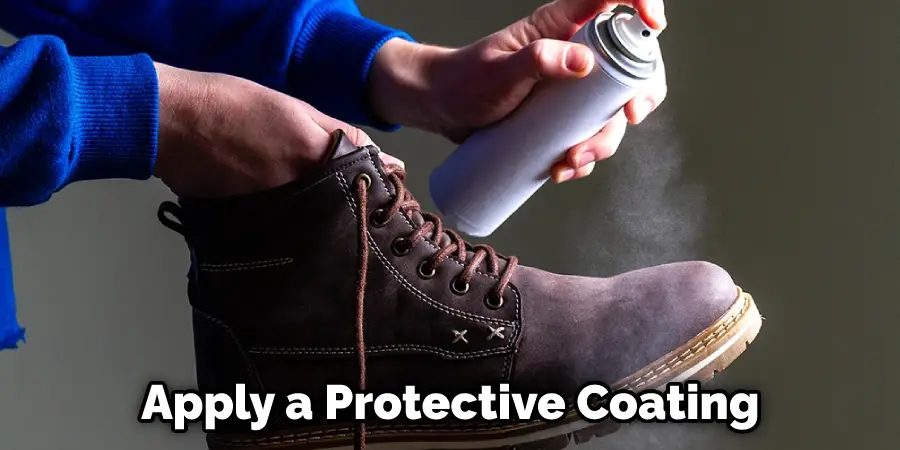
There are several different protective coatings that you can use on your shoes, but one of the most popular is a clear silicone spray. This type of spray creates a barrier on the surface of your shoes that repels water and dirt, making it easier to keep them clean.
To apply a clear silicone spray, hold the can about six inches away from the surface of your shoes and then spray a light coating over the entire sole. Once you have finished, allow the coating to dry entirely before enjoying your freshly cleaned crepe soles!
Additional Tips:
– If you are having trouble removing a tough stain from your crepe soles, you may want to try using a toothbrush or other stiff-bristled brush. This can help to loosen and remove any stubborn dirt or grime.
– If you do not have any grease-removing detergent on hand, you can also use dish soap or laundry detergent as a substitute. Just be sure to choose a product designed for use on delicate fabrics, as regular detergents may be too harsh for your shoes.
– For best results, it is always best to clean your crepe soles as soon as they become dirty. This will prevent the stains from setting in and becoming more challenging to remove.
Method 2: Using Curd Soap
Crepe soles can be challenging to clean, but there are a few simple methods that you can use to remove dirt and stains from your shoes. One way is to use a Curd Soap, which has natural cleansing properties that make it ideal for removing tough grime and residue from crepe soles.
Curd soap is a natural cleanser that is made from cow’s milk. It is rich in lactic acid, making it an effective cleansing agent. Curd soap is also gentle on the skin and can be used on sensitive skin types.
Step 1: Determine the Type of Crepe Sole You Have
The first step in cleaning your crepe sole is determining the type of crepe sole you have. There are two main types of crepe soles: natural and synthetic. Natural crepe soles are made from rubber, while synthetic crepe soles are made from various materials, including PVC and polyurethane.
Step 2: Select the Appropriate Cleanser
Once you know the crepe sole you have, you can select the appropriate cleanser. If you have a natural crepe sole, you will want to use a Curd Soap. If you have a synthetic crepe sole, you can use any mild soap or detergent. Avoid using harsh chemicals or abrasive cleaners, as these can damage the surface of the sole.
Step 3: Apply the Cleanser to Your Crepe Sole
Apply a small amount of your chosen cleanser to a clean cloth or sponge. Gently rub the crepe sole with your cleanser, paying attention to any areas that are dirty or stained. Allow the cleanser to sit on your shoe for several minutes before rinsing it off with water.
Step 4: Repeat as Needed
If you have adamant stains or residue on your crepe soles, then you may need to repeat this process a few times to remove them entirely. Be sure to rinse and dry your shoes after each use to ensure they remain in good condition. With regular cleaning, your crepe soles should look new for many years to come.
Additional Tips:
– If you are cleaning a natural crepe sole, avoid using harsh chemicals or cleaners as they can damage the rubber.
– If you are cleaning a synthetic crepe sole, be sure to rinse your shoes well after each use to remove any soap residue.
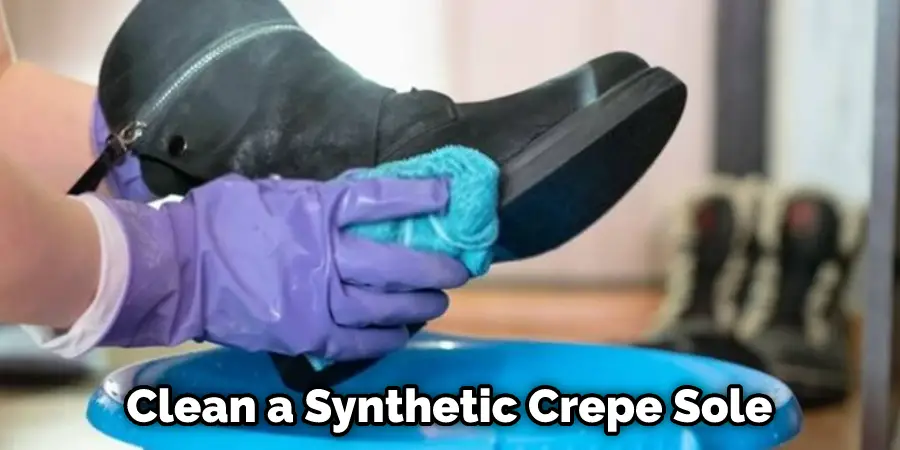
– Crepe soles can be dried with a clean cloth or air-dried. Avoid using direct heat as this can damage the material.
Do You Need to Use Professional?
If you are having trouble removing tough stains or dirt from your crepe soles, or if you are unsure about the type of crepe soles you have, it may be best to seek professional help. A shoe repair shop or professional cleaner can offer specialized services and products that can effectively clean and protect your crepe soles.
In some cases, professional cleaning may be necessary to avoid damaging your shoes further. Additionally, professional cleaners may be able to offer tips and advice on how to maintain and care for your crepe soles in the future.
By following these simple tips and methods, you can keep your crepe soles looking clean and well-maintained for years to come. Regular cleaning is essential for not only preserving the appearance of your shoes but also for maintaining their durability and longevity. With a little bit of effort, you can easily keep your crepe soles in top condition and enjoy them for years to come.
How Much Could It Cost?
The cost of cleaning your crepe soles can vary depending on the method you choose and if you decide to use professional services. If you choose to clean them at home, the cost will mainly be determined by the type of cleanser or protective coating you use.
A bottle of Curd Soap can be purchased for as little as $5, while a more specialized silicone spray can cost around $10-$15. If you opt for professional cleaning, the cost may be higher but can provide more thorough and effective results.
It is essential to factor in the cost of regular cleaning and maintenance when purchasing crepe sole shoes. By taking proper care of your crepe soles, you can extend their lifespan and avoid costly replacements in the future.
Frequently Asked Questions:
Q: Can I Use a Bleach-based Cleaner on My Crepe Soles?
A: No, using bleach or harsh chemicals can damage the material of your crepe sole. Stick to mild cleansers for best results. You can also try using a mixture of vinegar and water for tougher stains. It is always best to test a small, inconspicuous area first before applying any cleaner to the entire shoe. You may also want to consult the manufacturer’s instructions for specific cleaning recommendations.
Q: Can I Use a Scrub Brush on My Crepe Soles?
A: Yes, you can use a scrub brush or toothbrush to help remove stubborn stains from your crepe soles. Just be sure to use gentle, circular motions to avoid damaging the material. But if you are using a Curd Soap, you may not need to use any additional tools. You can simply apply the soap and let it sit for a few minutes before rinsing off with water.
Q: How Often Should I Clean My Crepe Soles?
A: It is best to clean your crepe soles as soon as they become dirty. This will prevent stains from setting in and becoming more challenging to remove. Regularly cleaning your crepe soles will also help them look new for longer and prolong their lifespan. The frequency of cleaning will depend on how often you wear your shoes and the conditions in which they are worn.
Q: Can I Put My Crepe Sole Shoes in the Washing Machine?
A: No, it is not recommended to put your crepe-sole shoes in the washing machine. The agitator can cause damage to the material, and the heat from the dryer can also affect its shape and durability. Hand cleaning is the best method for cleaning crepe soles. It may take more time and effort, but it will help preserve the quality and appearance of your shoes in the long run.
Q: What Can I Do to Prevent Stains on My Crepe Soles?
A: To prevent stains on your crepe soles, try to avoid wearing them in harsh or dirty environments. If you know you will be walking on muddy or wet surfaces, consider wearing a different pair of shoes. You can also use a protective spray or coating specifically designed for crepe soles to help repel stains and dirt. Additionally, regularly cleaning your shoes can prevent buildup and discoloration of the material.
Q: Can I Use a Hair Dryer to Speed Up the Drying Process?
A: No, using direct heat from a hair dryer can damage the material of your crepe soles. It is best to air dry them or use a clean cloth to gently pat away excess water. You can also stuff your shoes with newspaper or paper towels to help absorb moisture and maintain their shape while drying.
Conclusion:
Crepe soles are notoriously tricky to clean, but with the right tools and elbow grease, you can get them looking as good as new. Follow our simple methods on how to clean a crepe sole, and your shoes will be as good as new in no time. Remember to regularly clean and maintain your crepe soles to prolong their lifespan and keep them looking fresh for years to come. And if you are ever unsure, it is always best to seek professional help for more specialized care and advice. With these tips in mind, you can confidently rock those stylish crepe-sole shoes without worrying about dirt or stains ruining their appearance.

